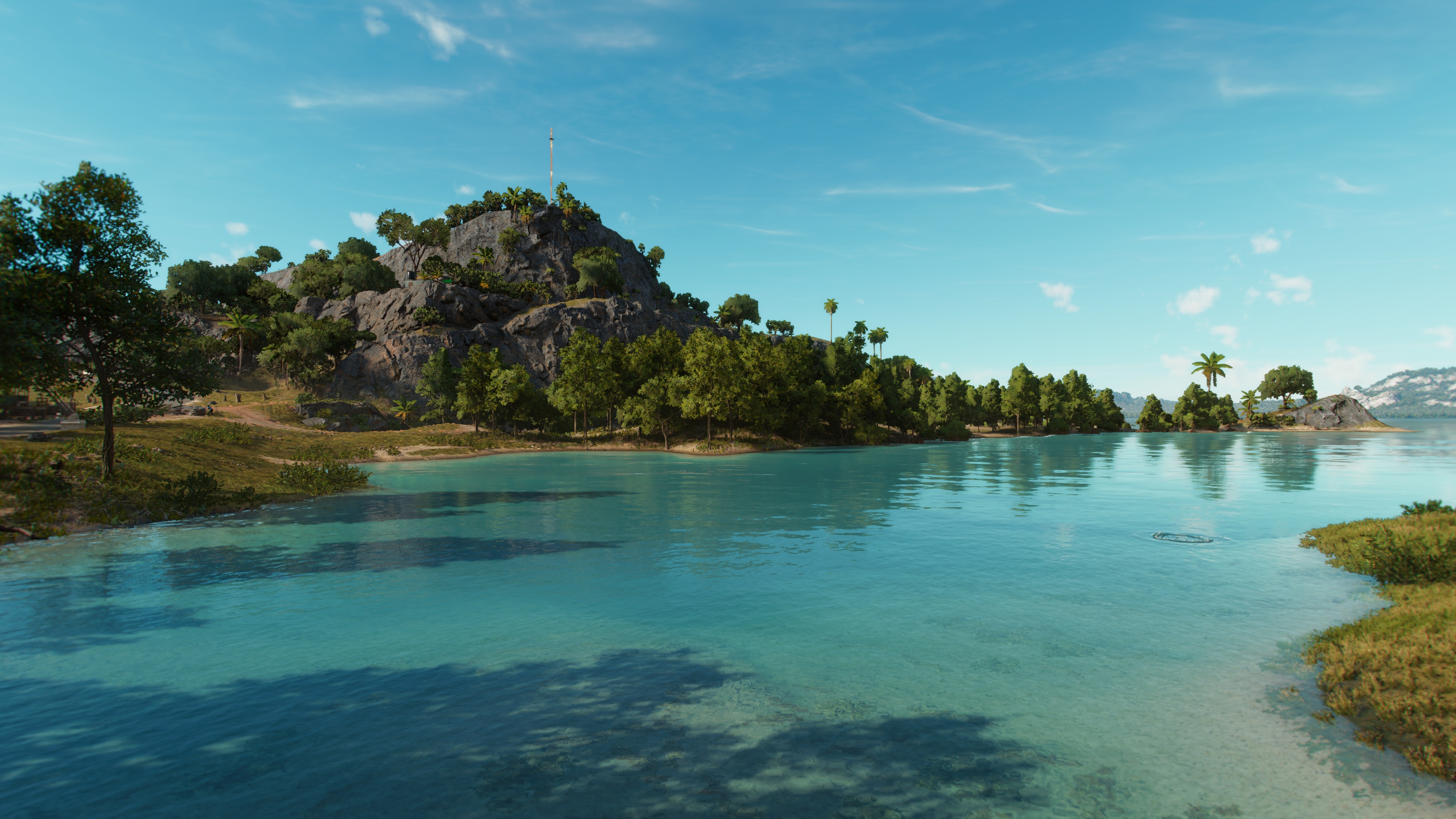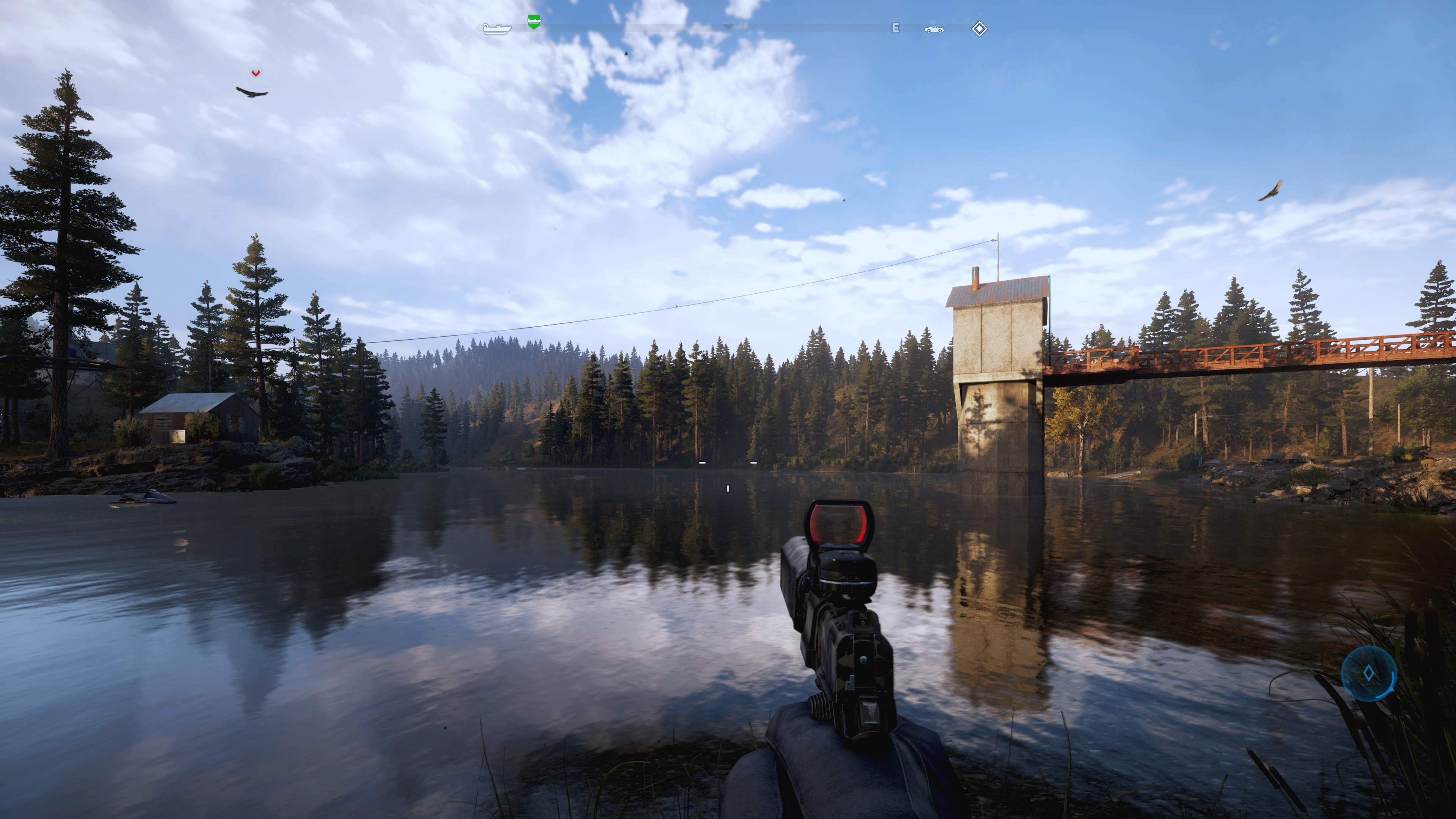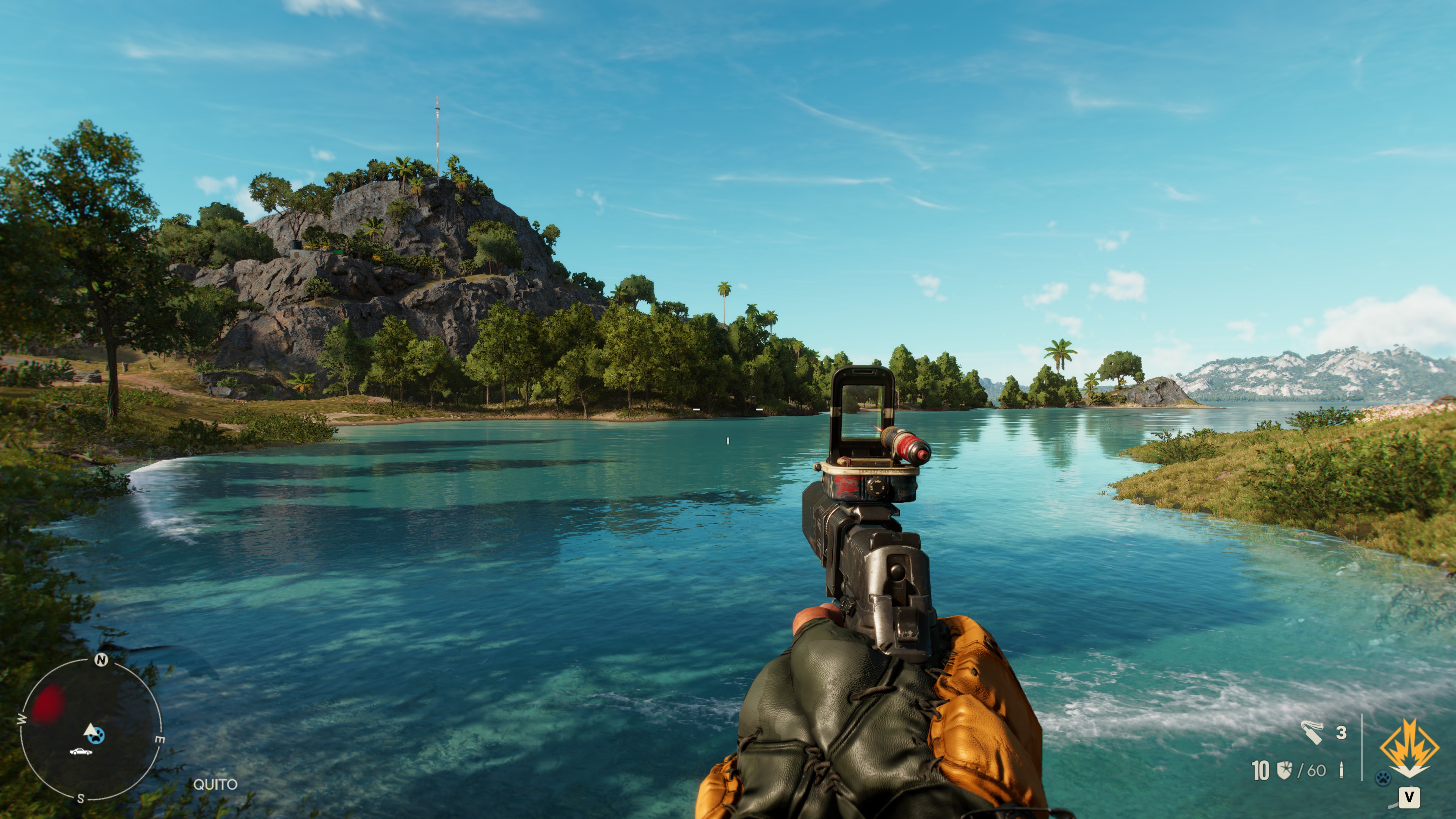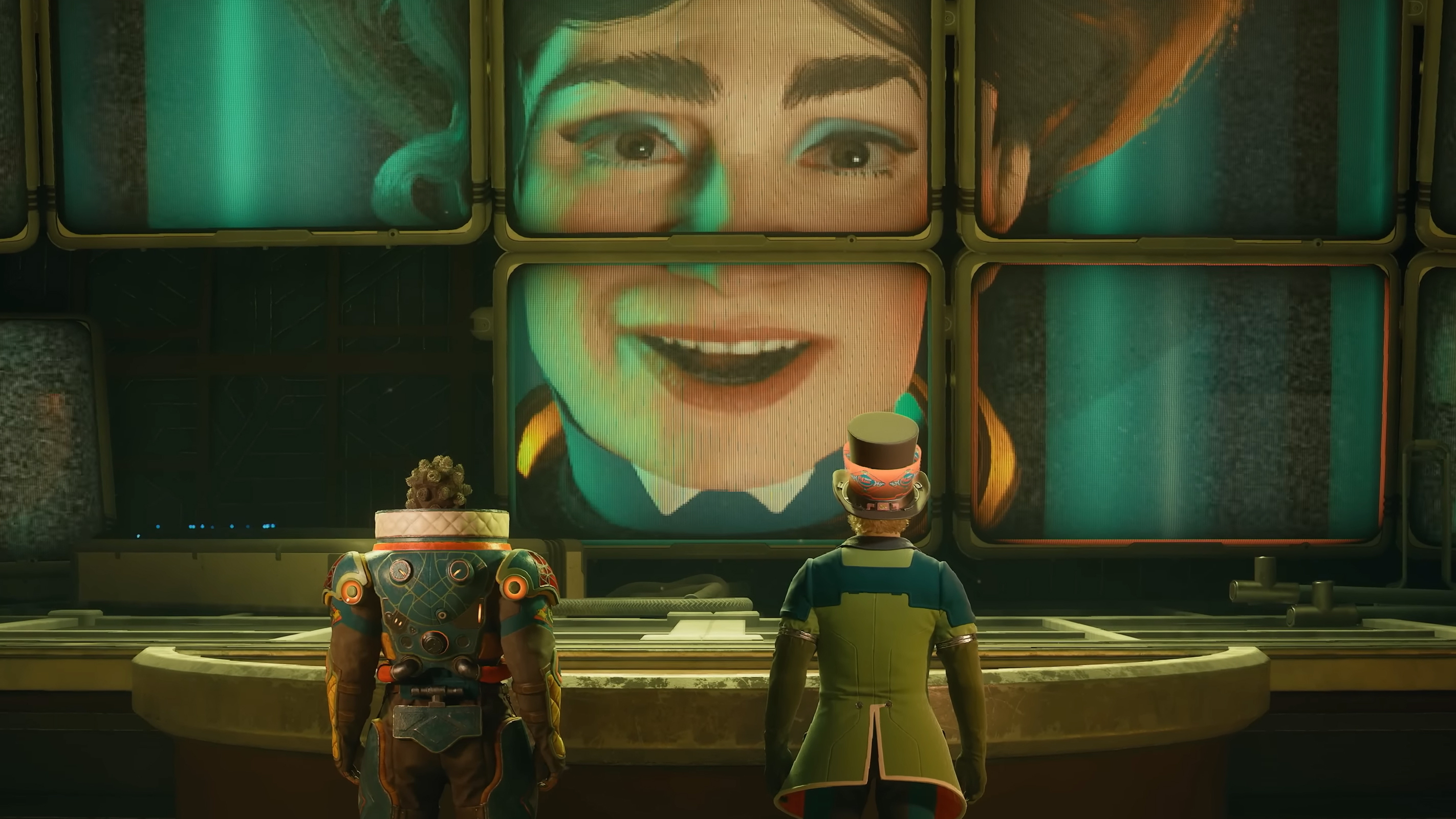
Open-world mayhem at its best.
When you think of the Far Cry games, what do you picture? I see beautiful ocean views, lots of guns, frantic battles, and a host of semi-unstable characters acting out a larger-than-life story. That’s how they’ve been almost since the very first one came out in 2004, and for 17 years, Ubisoft has stuck to the theme of bullet-flinging anarchy.
There’s no sign of a new one coming out just yet, but since we’ve just enjoyed a new (and surprisingly good) Assassin’s Creed game, it perhaps won’t be long before we’re back in the action. Until then, let’s have a look through the six major releases and three smaller standalones that make up the Far Cry franchise.
Not only will you get to see what each Far Cry game looks like at its very best, but we’ll go through what made each one different from the others, either in terms of graphics and tech, or gameplay features and story elements. If you’ve not played any of the games in the franchise, this walk through Far Cry’s history might be just the thing to get you hooked.
All the footage you’ll see was captured at 4K using the game’s maximum graphics settings, using a CyberPowerPC/MSI gaming rig (Ryzen 7 9800X3D, GeForce RTX 5080). Load up on guns, bring your friends, it’s Far Cry time.
Far Cry (2004, Crytek)
Kick-starting the whole franchise is the original Far Cry, created by German developer, Crytek, which made its own engine (CryEngine) to handle the game code. At the time, it was a technical tour de force for PC gaming, and its use of shaders and textures still holds up quite well today. There was certainly nothing to touch it for foliage, draw distance, and water effects in 2004.
While the tropical island setting appears completely open-world in nature, the game’s structure is almost entirely linear. However, the fundamental gameplay elements—you and lots of guns versus endless quantities of enemies to mow down—would go on to be reprised in all but one of the Far Cry releases.
The above clip of Far Cry is perhaps a little misleading, with regards to the quality of the graphics, as the capture wasn’t done with stock settings. The game’s launcher lets you jump into some of the finer aspects of the graphics configuration, and what you’re seeing here is with everything maxed out (e.g. 16x anisotropic filtering, ultra-fast environment refresh rate in reflections). In 2004, no gaming PC would have been able to run Far Cry like this at 4K, but with an RTX 5080, it’s a breeze.
This would be the first and last Far Cry game that Crytek made for Ubisoft, due to the developer signing a deal with Electronic Arts that ultimately resulted in Crysis. But Ubisoft arranged its own deal with Crytek for the Far Cry IP and a perpetual licence to CryEngine.
Far Cry 2 (2008, Ubisoft Montreal)
It was Ubisoft’s Montreal studio in Canada that was tasked with coming up with a sequel, and its coders went to work on updating CryEngine, to support destructible environments, fire mechanics, and better physics and animation. The significantly rewritten engine was named Dunia, and Far Cry 2 was its first public airing.
Eschewing the linear structure of the first game, Far Cry 2 is genuinely open-world, and perhaps a little too non-linear for its own good. Set in the savannah of a fictitious African country, the vistas are certainly not as eye-catching as those in Far Cry, and the muted palette and textures belie the heavy graphics processing taking place.
No modern gaming rig will struggle, of course, but you will get all kinds of game-breaking bugs occurring if you don’t cap the frame rate to 60 fps or lower. That’s because the physics scripts are synchronised with the frames, so if they run too quickly/frequently, you get all kinds of funny things going on. This is something that’s common to many games from this era, especially those that are multi-platform releases.
It’s not the best-looking game in the series, the combat is poor, and the malaria mechanic is somewhat tiresome, but underneath it all, Far Cry 2 is perhaps the best example of the series’ do-anything-you-like nature. At the very least, the player’s background (mercenary for hire) makes a lot more sense than that of the next one.
Far Cry 3 (2012, Ubisoft Montreal)
Heading back to the tropics, Ubisoft spent many years creating its perfect paradise for open-world exploring and fighting. Dunia was further refined—becoming Dunia 2 in the process—with better water and weather rendering, motion capture and animation, and a decent attempt at global illumination.
Far Cry 3’s story is perhaps the weakest of them all, mostly because of how quickly a rich college jock transforms into a one-man slaughterhouse, dispatching fauna and flora alike with ease. Still, at least it has one best ever villains in a game, Vaas, though it’s a shame that his character is rather wasted.
Despite having some of the best graphics in a PC game for its time, Ubisoft chose not to offer a benchmark mode in Far Cry 3. The original game doesn’t have one either, but you can record gameplay and play it back in-game, via console commands. Perhaps it was to disguise the fact that, at maximum graphics settings, the game’s performance wasn’t exactly stellar at launch.
If you’ve watched the above video and thought that there’s something odd about the graphics, then don’t worry, you’re not just imagining things. Far Cry 3 uses screen space ambient occlusion to give objects a more realistic sense of lighting and shadows around them, and its maximum setting rather overdoes it—to the point it’s almost like cel shading.
Despite its shortcomings, Far Cry 3 was a huge hit on release, and it’s a lot of fun to play. Some gamers might not like the repetitive nature of unlocking towers, taking over bases, and slowly grinding through the map, but it’s been perfect fun for millions of people.
Far Cry Blood Dragon (2013, Ubisoft Montreal)
Initially intended as a DLC for Far Cry, Blood Dragon was released as a standalone game in its own right. It’s a pastiche of every 1980s gung-ho action and sci-fi movie you can think of, and while the humour won’t be to everyone’s taste, the combat certainly should be. The developers stripped everything right back to focus on you, guns, and lots of shooting.
They had to, though, as Ubisoft wanted the project done very swiftly, and some of the assets from Far Cry 3 are reused in Blood Dragon. To disguise this, the game is set almost entirely during the night, so you need to look really carefully at the vegetation, for example, to spot its FC3 origins.
Far Cry 4 (2014, Ubisoft Montreal)
The next major entry in the Far Cry franchise is number four, which commenced development immediately after Ubisoft Montreal finished Assassin’s Creed III. Dunia 2 was used again and once more, received a flurry of tweaks and updates to improve the graphics and animations.
For starters, the iffy ambient occlusion in Far Cry 3 was replaced by something far more robust (HBAO+ developed by Nvidia), along with a shadow system that greatly improved the accuracy of soft edges (PCSS, also developed by Nvidia). Add in nicer lighting, and it was a genuine step forward for Ubisoft’s engine.
Far Cry 4 is arguably a rise-and-repeat of Far Cry 3, though the Himalayan setting gives the game world a somewhat narrower feel to it than its predecessor. However, Ubisoft significantly increased the vertical scale of the map, and although you don’t have the ultimate freedom to fly anywhere you like, FC4 has some of the best vistas in the series.
It feels more polished, too, with weapons and vehicles having more control and bite to them than those in FC3. Plus, you get to ride elephants and bash people and cars out of the way, and the game’s worth playing just for that. There’s a vast amount to discover and do, and even if some of it is rather repetitive (unlocking towers by climbing to the top, once again), it’s a perfect game to unwind with after a long day of work.
Far Cry Primal (2016, Ubisoft Montreal)
Primal is what happens when somebody asks, “What would Far Cry 4 be like if it was set in the past, say 10,000 years ago?” That question was clearly raised at some point after FC4 was finished, because that’s precisely what Far Cry Primal is—to the point that the map is actually the same, albeit reskinned to look suitably Palaeolithic.
Unusually for a Far Cry game, there’s no multiplayer element, which is a shame as hunting mammoths and sabre-tooth tigers by yourself is no laughing matter. Far Cry Primal is still a lot of fun, though, and one could argue that it actually has some of the best combat of all the FC games.
It also has some excellent graphics, and they’ve aged incredibly well. The high-quality motion capture, especially that of facial movements, helps a lot, but the overall lighting, shadows, and textures are top-tier. To showcase the pretties, Ubisoft added a benchmark for Primal (though oddly not for FC4), but it focuses a little too much on water graphics, rather than showing off the game’s epic views.
Shame, then, that the overall story and game structure aren’t as solid as those in Far Cry 3 and 4, and while the open-world looks ripe for exploring, the fact that it’s set in the Stone Age means there’s relatively little to see or do, other than offing baddies. Still, lobbing a spear into somebody’s head in Primal feels like headshots perfected.
Far Cry 5 (2018, Ubisoft Montreal/Ubisoft Toronto)
Perhaps the most Far Cry out of all the Far Cry games, number five ups the ante when it comes to a sense of scale and openness. Want to just let the world burn while you do a spot of fishing? Go right ahead. Fancy taking a plane out for a spin and strafing a few camps and structures? Not a problem. Wish you could rely on an in-game companion to help out, rather than relying on co-op? Far Cry 5 has got just the ticket.
Although Ubisoft was still using Dunia 2, the engine was the same as that in FC3 in name only. By 2018, it had been massively updated and overhauled, and it’s well worth checking out this long video presentation on all of the rendering tricks Ubisoft pulled out to make FC5.
The game enjoyed a lot of commercial success on release, though it also attracted a fair amount of controversy. Partially because of its setting (a small rural country in America reminiscent of Montana), but mostly because of the integral use of far-right theatrics and drug-guided religious fanaticism in the story. The latter was also critically received rather poorly.
If one ignores all of that (and the less-than-satisfactory ending), Far Cry 5 perhaps offers the most fun out of all the FC games. There’s a huge amount to see and do; it’s a measure of how good Far Cry 5 is when you feel sad once everything has been ticked off and completed.
Far Cry New Dawn (2019, Ubisoft Montreal)
New Dawn picks up where Far Cry 5 ends, albeit by a number of years, and once again, it’s you who’s here to save the day (or overly-vibrant post-nuclear rural country, in this case) with that special blend of combat, vehicles, and companions.
Planned as a smaller project right from the start, New Dawn’s map is far more concise than FC5’s so there’s considerably less to explore and do. And in terms of graphics or other gaming tech, nothing new was brought to bear—just a reuse of the same mechanics (and some assets) to tide you over while the next major Far Cry game was being developed.
That said, the base building element was new and gave Far Cry New Dawn a better sense of who you were trying to help out, rather than just being a lone warrior, out to wreak havoc on the hordes of baddies.
Far Cry 6 (2021, Ubisoft Toronto)
And so we come to the final Far Cry game in the franchise so far. It’s almost been four years since Far Cry 6 was released, and looking back through the timeline of the other games suggests that we’re due another one soon. However, Ubisoft’s recent financial woes probably mean the next Far Cry will have been paused until the publisher can be certain of it being a major hit.
That’s possibly down to the fact that while Far Cry 6 sold quite well, it wasn’t as successful as its predecessor, and it garnered lacklustre reviews. The game’s world is vast and detailed, and the Dunia 2 engine arguably produces the best graphics of the whole franchise in this form. Even ray tracing makes an appearance, though for nothing more than making puddles of water reflect the environment better.
Far Cry 6 has all the gung-ho, gun-slinging elements that are the hallmark of every FC game (bar Primal, of course), and there’s no shortage of bases and enemies to battle against. Ubisoft packed FC6 with a host of additional features to keep you playing the game, and yet, for all its wonderful chaos, the story doesn’t quite hit home.
The future for Far Cry
Let’s finish this amble through Far Cry’s history by considering what’s next for the franchise in terms of rendering, as graphics have been a major component of what makes an FC game… well… an FC game! Ubisoft’s studios use a host of different engines, but two of its biggest—Anvil for Assassin’s Creed and Snowdrop for The Division, Avatar and Star Wars Outlaw—are perhaps the best ones to use to judge what’ll happen with Dunia.
Ray tracing will almost certainly be present in the next Far Cry game, but perhaps not to the extent that it is with the recent Snowdrop-powered games. In those, ray tracing is always used, and while it can be done on GPUs with RT units, they’re games that are best played on modern graphics cards.
Assassin’s Creed Shadows only forces ray tracing on in the main home base; outside of that, it’s entirely optional, though the game does look nice with it enabled. Given that Far Cry games lean heavily on the visuals, I suspect that the next one will fall in the Assassin’s Creed camp and use it selectively.
That’s because Far Cry worlds have always been heavily detailed, especially when it comes to foliage and other assets that give ray tracing a headache to deal with. That said, Avatar: Frontiers of Pandora is rich with detail and packed with trees and plants, so it’s not impossible that Far Cry 7 will be permanently ray-traced.
But the aesthetics of a game are more than just lighting, shadows, and reflections. One criticism of Far Cry worlds is the relatively lack of interactivity they have, especially in terms of destructibility. There is some element of that in FC games, of course, but ramping this up (e.g. in the form of buildings that can be fully destroyed) would make the next Far Cry game stand out.
One last thing to consider is where is next for Far Cry? Will Ubisoft return to Africa or try somewhere like Alaska, where it can return to including snow and ice in the graphics? Wherever it does head off to, you can be sure that some elements will just be the same: lots of guns, lots of fighting, lots of kooky characters that will tag along for the mayhem.
Perhaps gamers want more than just shooting people and animals, wrapped in a silly story, but to me, Far Cry has always been about blowing off some steam and having a (literal) blast. It’s the fast food of the game industry, and there’s absolutely nothing wrong with that.








